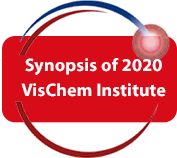Participants will join the VisChem Mini-Institute via Zoom and experience the VisChem Approach. This approach uses carefully produced, dynamic particle-level animations, combined with constructivist teaching strategies, all informed by a cognitive learning model and the latest research on learning through multimedia, to foster conceptual understanding of chemistry. A key strategy of the approach is refinement of the learners’ internal visualizations using storyboards (drawings with explanation) of chemical and physical changes. Educational research has repeatedly shown that use of particle-level models is vital to building student understanding of reactions in solution. Participants will get access to a suite of VisChem resources during the institute (animations and storyboard templates) and will be able to download them and use them indefinitely. The institute builds teacher expertise in pedagogy that simultaneously implements molecular-level models and addresses the cognitive challenges of molecular visualizations. It supports teacher learning to help move students from phenomena description to explanation to deepen conceptual understanding in alignment with the NGSS. VisChem is aligned with the follow NGSS SEPs: developing & using models and constructing explanations; and critical disciplinary core ideas: matter & its interactions, motion & stability: forces & interactions, and energy. Learning outcomes:
- Use the particulate level to explain core chemistry concepts; relate these explanations to macroscopic phenomena, symbolic representations (formulas, equations), and mathematical relationships (e.g., concentration as a crowding of particles in a given volume of solution represented as c = n/V).
- Identify the limitations of dynamic molecular models generally (and specifically VisChem animations) and recognize how limitations influence student thinking and generate inaccurate ideas.
- Experience VisChem tools (e.g., frames from animations, static models, sample drawings and graphics) and strategies (e.g., peer discussion, storyboarding, attention focusing, segmenting) in a learner role.
- Begin to plan how to implement VisChem animations and the VisChem Approach in your classroom.

